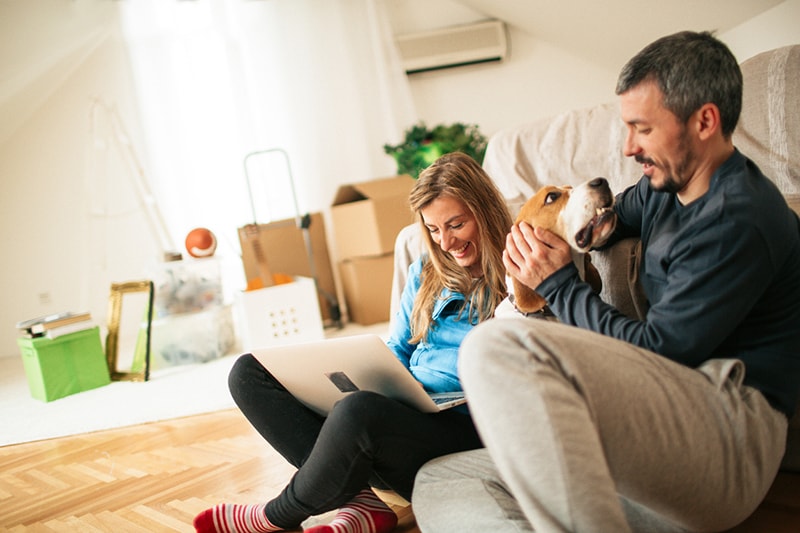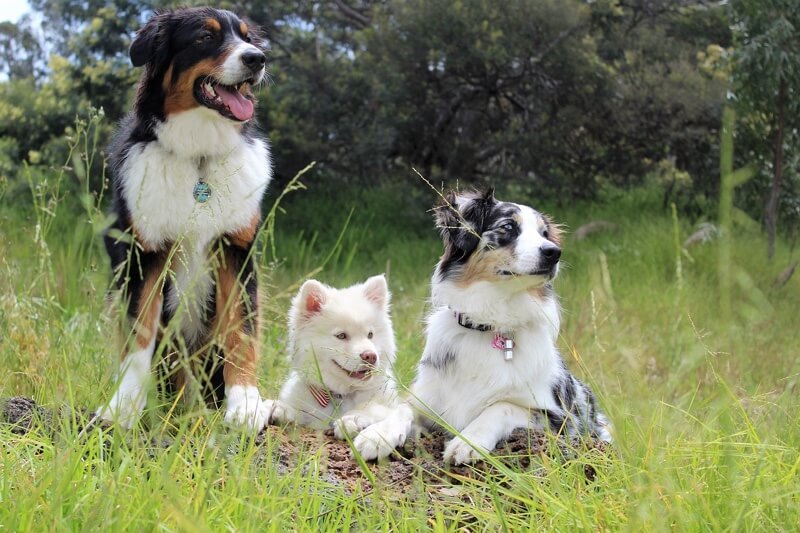
Looking to share your apartment or condo with a new four-legged friend? Or maybe you and your pooch are moving from a house to a smaller residence? It's all good! Dogs are quite adaptable and can be happy in almost any space.
Check the Rules First
The first thing you need to do is to make sure four-legged roommates are allowed. Some landlords or homeowner's associations (HOAs) have restrictions regarding the breed, size, or the number of dogs that can live there. If you're renting, there may be additional terms in your lease pertaining to dogs. They may ask you to comply with rules such as:
- Registering your dog with the HOA before bringing them home and updating this registration annually
- Providing proof from your veterinarian that your dog is spayed or neutered and vaccinated according to state and local laws
- Having your dog wear a collar and ID tag at all times, which is something you should do in any case even if your dog is microchipped
- Restricting them from entering specified common areas, such as the laundry room
- Keeping them in control at all times and promptly picking up their poop
Additionally, you could be charged an extra security deposit to cover pet-related damage. Make sure you understand any costs and requirements up front to avoid surprises later.

Best Dogs for Small Apartments
If you're an apartment dweller looking to adopt a dog, you should consider more than just the size of the breed.
Temperament
Just because a dog is small doesn't necessarily mean they're the right fit for a small apartment.
While they may take up less space, small dogs like Chihuahuas or Jack Russell Terriers can be high-strung and energetic. Dogs that tend to bounce around and bark at every noise can be disruptive in tighter living quarters. They can also cause issues with neighbors who enjoy their peace and quiet. That’s not to say you should rule them out, but temperament and energy level are important to consider.
For instance, you might not think a giant Mastiff would work well in a small apartment, but these stately dogs are generally calm and need less exercise especially as they get older. Retired racing Greyhounds can be another good choice for apartment living. These generally friendly pooches prefer to exercise in short bursts and chill out the rest of the time.
You may also want to consider adopting a senior dog who may naturally have a lower activity level. You might be concerned about the health and longevity of an older dog, but they can make wonderful companions and live happily for many years with the right kind of care. Plus, they’re often overlooked at adoption at shelters so you could be saving a life by adopting an older dog. If you're set on bringing home a puppy, keep in mind that they are energetic and need lots of attention.
Of course, you can't predict a dog's temperament based on their age or breed. All dogs are individuals with their own personalities and preferences. They're also shaped by their environment and prior experiences. If you're adopting a dog from a shelter, ask the people who work there for advice on which dog might best fit your needs—and vice versa.
Lifestyle
Another thing to factor into your decision is your lifestyle. Are you looking for a best friend who will join you on long hikes in the woods? Then a small dog with little legs may not be able to keep up. Or maybe you want a calm cuddle bug to warm your lap while you watch TV? Then an energetic dog who prefers to play constantly may not be right for you.
If you have children, you'll want a dog that can get along well with kids and endure a little roughhousing. In this case, you might not want a toy dog who can get stepped on by small feet or get injured easily.
Care Needs
You should think about the kind of care your dog will require. For instance:
- Exercise – All dogs need activity every day to keep them physically healthy and mentally stimulated. How much exercise will your particular dog need? Is there a dog park or walking trail close to your apartment where they can run around? Will you need to hire a dog walker or look into doggie daycare to take them out during the day?
- Nutrition – You'll need to feed your dog a healthy diet. Your veterinarian can recommend a quality dog food that's right for your pooch, but you should think about where you'll put the food and water bowls. If you have limited space in your kitchen, you may need to get creative and place them in a hallway or near the front door.
- Grooming – Fluffy dogs like Pomeranians and pups who shed a lot can need more brushing. You'll probably also have to sweep and vacuum often since dust bunnies can be more noticeable in a small place.
- Training – Puppies need a lot of training, including learning basic commands and going to the bathroom outside. Potty training can be extra tricky if you live on a high floor and can’t rush them outside when they need to go. Older dogs may need less training, but they'll still need to learn your house rules. You should also decide if you’re going to crate train your dog and where the crate will fit in your apartment.
- Veterinary care – Your dog will need annual check-ups plus you'll want to know who to call in case of an emergency. Search for a veterinarian near your apartment.
You'll also need to shower your dog with love and attention. That's the best part!

Moving from a Home to an Apartment with Your Dog
Some dogs acclimate quickly to a new living space while others may take some time to adjust. Here are some things you can do to help them with the transition:
- If possible, consider bringing your dog by the apartment before moving day. This way they can get used to the look, feel, and smell of the place before it's a permanent thing. Offer them a few treats while you’re there, so they start associating the apartment with good memories.
- Set up a cozy place for them to relax with their favorite blanket before they arrive. This can help make them feel more at home right away.
- Try not to disrupt your dog's routine after you move. For instance, feed and walk them around the same time each day. You may also want to put their food and water bowls in a similar place.
Remember to make a plan for your dog on moving day too. You don't want your dog to slip out an open door or get hurt in the commotion as furniture and boxes are moved around. You can designate someone to supervise your dog during the move or leave your pooch with a trusted friend or family member for the day.

Tips for Living in an Apartment with a Dog
As a responsible dog parent, you'll need to make sure your apartment is a safe and happy space for your dog. Here are some tips to help:
- Make sure there's plenty of light – Some apartments lack natural light depending on the number and set up of the windows. If your apartment tends to be dark during the day, leave a light on when you go out, so your dog won't get disoriented or anxious.
- Give them a comfy spot to rest – Set up a cozy place with a pet bed or blanket for your dog to retreat. It doesn't need to be a big space. Dogs like to cozy up in areas that feel like a den, which is a trait inherited from their wolf ancestors.
- Provide them with safe toys – This can help prevent boredom and unwanted behaviors like destructive chewing or excessive barking, which can drive your neighbors crazy. A treat-filled puzzle toy is a great way to keep your dog quietly occupied.
- Get them outside – Give them a break from hanging around the apartment by taking walks, visiting dog parks, or wandering around a local pet store if they allow it. If you're unable to get your dog outside often enough, you may need to hire a dog walker or sign them up for doggie day care center. Your dog might enjoy the opportunity to socialize with other pups.
- Dog-proof your balcony – If your apartment has a balcony, make sure your dog can't squeeze through the railings and fall. Unfortunately, this is a common accident, but it is easy to fix by installing mesh or screens.
You'll also need to dog-proof the inside of your apartment. For instance, hide or tape down wires that can be chewed or tripped on, remove any choking hazards, and store toxic housecleaning products, medications, and pesticides out of paw’s reach.
If something does happen to your dog in or around your apartment, pet insurance can help you give them the best veterinary care possible. Get a free quote now.
The information presented in this article is for educational and informational purposes only and does not constitute or substitute for the advice of your veterinarian.
Helpful resources for pet parents
Browse categories
-

Dogs and Intervertebral Disc Disease (IVDD)
Intervertebral disc disease is a fairly common spinal problem for dogs, but many pet parents may not be aware of the disease or its symptoms.
-

Digging into Pet Health Insurance
Wondering about pet insurance for your four-legged family member? Let’s dig in!
-

How to Socialize Your Dog
It’s best to start early and often

Browse Categories
(opens new window)
